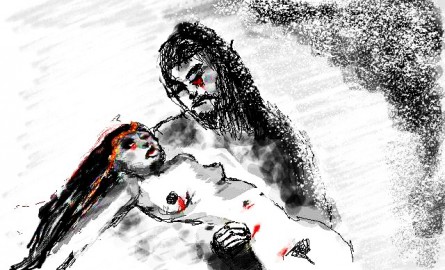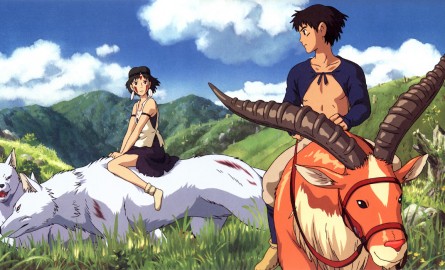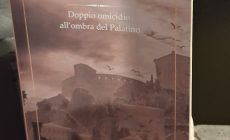by Francesco Bordi
– translation by Susanna Lai –
 Daniel is not only the protagonist in “Daniel Fights a Hurricane”, by the extremely visionary author Shane Jones, but he is also an almost universal example of who or what all those who had accepted “to surrender to their imagination” could have become once they had reached adulthood.
Daniel is not only the protagonist in “Daniel Fights a Hurricane”, by the extremely visionary author Shane Jones, but he is also an almost universal example of who or what all those who had accepted “to surrender to their imagination” could have become once they had reached adulthood.
Daniel’s story is not a merely imaginary tale. It is the adventure of a forty-year-old man (at least that seems to be the protagonist’s age), which is experienced, interpreted and endured in the same way as a child would do it.
This novel, which follows “Light Boxes”, another Shane Jones’s successful book, portrays characters like “the Most Handsome Man in the world that has got the most terrible teeth in the world”, “the Deserts group”, “The two-second Dreamer” “Iamso” (which most probably is the disguised Anglo-Saxon word for “I am so”) and “the Canoe Women”. Yet other characters are depicted: “the Tiger”, “the Ape with a coral stuck in its shoulder” and many other animals. Those creatures, which have different shapes and skills, move in spots and places that are worthy of Alice in Wonderland’s best passages. As you read the descriptions of the “Village of Underwater Pipes you can imagine the terrible and unbearable heat emitted inside the “New Mountain” and you rack your brain to figure out how three rooms and a series of ladders can fit into the famous “One-room house…”
This novel is a great metaphor for children’s growth, but at the same time it portrays adults becoming aware of their responsibilities, and with regard to this point another important character must be introduced. Co-protagonist of the whole story is Daniel’s ex wife, who had left her beloved mate because he was “ill with imagination”. During the narration, and at unexpected times, it is told how Daniel tended to alienate from the real world to surrender to imagination.
It is in his moments of lucidity, however, that the protagonist reassures his wife that he “will let himself be helped”.
It is not a question of romantic alienation from reality, but one of pathological imprisonment that in the last pages of the book is experienced as a tragedy, which reminds of mentally ill people as well as the suffering of those who are close to them and love them. The rhythm of the story plays upon words creating a semi-metaphoric and “semi-sick” story, as well as a tale between imagination and reality. Narrative tension keeps on growing since the first page and it masterly accompanies readers to the end of the story. One needs to read a few paragraphs to enter the several dynamics and interactions occurring between Daniel and the world correctly – be it the real world or his inner one). However after one has understood the narrative system, the whole plot is “magically fascinating” Not only will Daniel fight a hurricane, but he will also fight the need to live in reality. He will confront his wife, who needs to have a man and not someone who seems to be a man. Yet Daniel will fight against his world but also against his will and need to stay there forever.
In this way the American author describes the fighting of a harsh battle disguised as a story for children. Shane Jones’s adventure is against the most concrete part of life that man himself has built. It is a life made of psychologists , oil pipes to be built and areas too small to move inside: there is no door leading to parks, no village under the Ocean and no mountains covered with writings. Our story-teller has therefore chosen the most enthralling and ambiguous means: the fairy tale. This time, however, the tale is not the usual story written for children but it is a story narrated exactly in the way a child would tell it. The protagonists are placed half-way between reality and imagination. The objects are borrowed from daily life and they are adapted to the fairy-tale style . Creatures and people are outlined as just seen and are described by the hearsay elements and yet by the belief “I want them to be so”. Deaths, births and people replaced by the same people but in a “new” version, all that has a meaning in Shane Jones’s book. While in his previous novel “Light Boxes” vision was provided as a natural element and it was accepted without any problem by the main characters, in “Daniel Fights a Hurricane” the protagonist’s tendency to be visionary is brought forward and it is ground for clash with other people and inner struggle of doubtful resolution.
In practice Daniel will have to fight a Hurricane that is much more serious than it seems to be. Sooner or later, we all find ourselves to fight hurricanes. The fairy tale has its own end, but it leaves the reader scope for deep reflections and questions.
Is it right to choose ? Is it really necessary for a human being to side with daily reality or is it right to continue one’s creative expansion process, started in the earliest years of life. Who is the happiest one? The visionary or the pragmatic? Karen herself or Helena (according to the protagonist’s moments of lucidity) wonders “how is it to live in the way Daniel does?” and she even finds herself to openly “envy” that way of living.
Whatever the choice, the struggle is to be fought. Daniel MUST fight a Hurricane. Daniel MUST also decide whether he is fighting to save his world or the one where his beloved wife lives. His wife, in turn, MUST fight to save him and to have him back with her. As for us, we must read this book because through a fairy tale, which is sometimes gloomy and other times ironic, Shane Jones helps us to remember that any inner struggle must be fought provided it brings about a change. It does not matter whether it will take place in our daily life or in the gardens of our mind . It is important that it helps us to come out from the torpor we too often complain about, even though we are responsible for it as victims and authors at the same time.
Shane Jones, “Daniel contro l’uragano”, Milano, ISBN edizioni, 2012.
Original title: Shane Jones,“Daniel Fights a Hurricane”, Penguin, 2012











